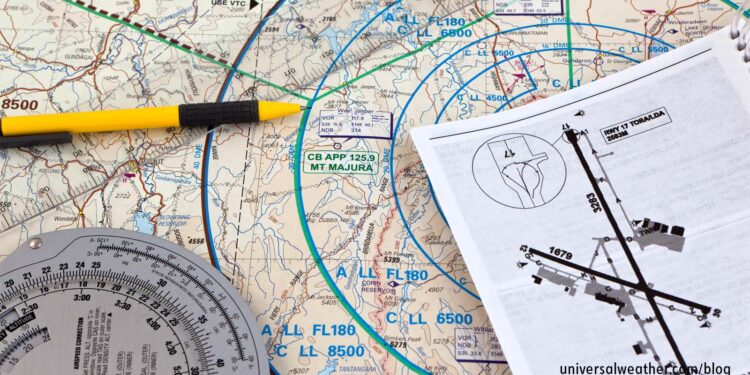Temporary Flight Restrictions: What You Need to Know

Temporary Flight Restrictions (TFRs) are a type of Notice to Airmen (NOTAM) that can be issued at any time. These airspace restrictions can cause flights to be re-routed or delayed. Non-adherence to TFR procedures may result in your flight being intercepted or detained and/or crew interviewed by law enforcement personnel.
The following is an overview of TFRs and what you need to know:
1. Know what TFRs are
A TFR is defined as an area restricted to air travel due to a hazardous condition, special event, or general warning for an area of controlled space by the Federal Aviation Administration (FAA). TFRs have always carried great importance in protecting large events or areas of special security interest to the U.S. – such as Super Bowl, NASCAR races, major theme parks, and nuclear power plants. For more information on the purpose of a TFR, see the FAA website.
2. TFRs are issued for various reasons
A TFR is meant to:
A. Protect persons and property in the air and on the surface from an existing or imminent hazard associated with an incident on the surface when presence of low-flying aircraft may magnify, alter, spread, or compound the hazard (14 CFR Section 91.137(a)(1))
B. Provide a safe environment for operation of disaster relief aircraft (14 CFR Section 91.137(a)(2))
C. Prevent an unsafe congestion of sightseeing aircraft above an incident or event which may generate a high degree of public interest (14 CFR Section 91.137(a)(3))
D. Protect declared national disasters for humanitarian reasons in the State of Hawaii (14 CFR Section 91.138)
E. Protect the U.S. President, Vice President, or other public officials (14 CFR Section 91.141)
F. Provide a safe environment for space agency operations (14 CFR Section 91.143)
3. Know how to read a TFR
TFRs are written in free text and may vary somewhat according to Aeronautical Information Manual (AIM) 3-5-3(i). To preclude misunderstanding the implemented NOTAM will contain specific and formatted information. The TFR format always begins with the phrase “flight restrictions,” followed by location of the TFR, effective period, area defined in statute miles, altitudes affected, FAA coordination facility and phone number, reason for the TFR, agency directing any disaster relief activities, and the agency’s phone number, along with any other information considered appropriate by the issuing authority.
4. There are 7 categories of TFR
FAA AC 91-63 lists seven types of TFRs:
Sec 91.138 TFRs in national disaster areas in the state of Hawaii
Sec 91.139 Emergency air traffic rules
Sec 91.141 Flight restrictions in proximity of Presidential and other parties
Sec 91.143 Flight limitations in proximity of space flight ops
Sec 91.145 Management of aircraft ops in vicinity of aerial demonstrations and major sporting events
Sec 99.7 Special security instructions
5. Here’s an example of a TFR
14 FR Section 91.138:
“The following NOTAM prohibits all aircraft except those operating under the authorization of the official in charge of associated emergency or disaster relief response activities, aircraft carrying law enforcement officials, aircraft carrying personnel involved in an emergency or legitimate scientific purposes, carrying properly accredited news media, and aircraft operating in accordance with an ATC clearance or instruction. Flight restrictions Kapalua, Hawaii, effective 9605101200 UTC until 9605151500 UTC. Pursuant to 14 CFR Section 91.138 temporary flight restrictions are in effect within a three-nautical-mile radius of N205778/W1564038 and Maui/OGG/VORTAC 275 degree radial at 14.1 nautical miles. John Doe XXX-XXX-XXX or 122.4 is in charge of the operation. Honolulu/HNL XXX-XXX-XXX (123.6) FSS is the FAA coordination facility.”
6. TFRs are only applicable in the U.S.
According to FAA AC 91-63C, TFRs are only implemented by the FAA for the sovereign U.S. and its territorial airspace. If a flight restriction is located in an area extending beyond the 12-mile coastal limit, or U.S. border, the associated NOTAM will contain language limiting airspace restrictions to the U.S., its territories, and possessions. The FAA may, however, issue an advisory of any hazard or dangerous situation outside sovereign U.S. airspace/territories via NOTAM. If the U.S. decides to restrict operators of U.S.-registered aircraft from operating over certain foreign countries, this is done via FAA Special Federal Aviation Regulation. Find active TFRs on the FAA website.
7. Know penalties for non-compliance
Action may be taken against any pilot who does not comply with special requirements or procedures associated with TFRs. The FAA may take administrative action including imposing civil penalties and suspension or revocation of airmen certificates. The U.S. government may pursue criminal charges, including charges under Title 49 of the US Code Section 46307, or may use deadly force against the airborne aircraft if it determines that the aircraft poses an imminent security threat.
Conclusion
Regardless of where he or she sources flight information – 3rd-party providers or websites – it’s always the Pilot-In-Command’s responsibility to obtain updates on any active TFRs. If you have questions regarding TFR specifics, it is recommended to contact the entity listed in the NOTAM to obtain the most complete, direct, and factual information.
Questions?
If you have any questions about this article, contact me at jasondavidson@univ-wea.com.




